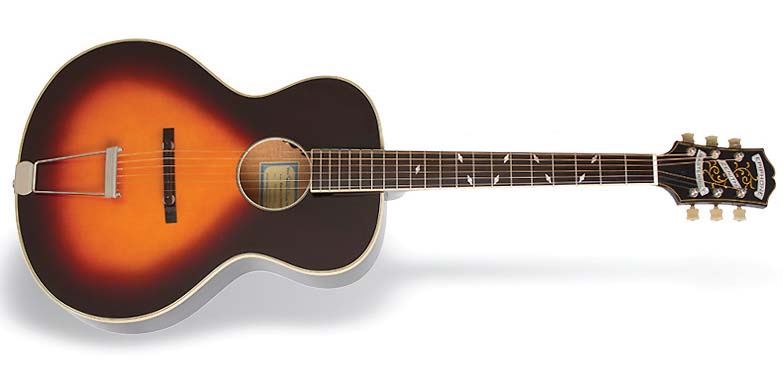This is exactly what I thought when I tuned up the Epiphone Masterbilt Century Zenith guitar and played the first chord. These beautifully crafted guitars have that certain ‘something’ about them, and in such a way that you’ll find they might just change how you approach certain music and give you a whole new appreciation for a sound. And that sound is old.
TAKE A STEP FORWARD, INTO THE PAST
What Epiphone set out to do with this instrument is to create an acoustic guitar that feels like the blues and plays like jazz. What exactly that means, I am not sure, but it certainly felt like that to me. These guitars bridge the gap between an acoustic and an archtop electric guitar. Not only is this an archtop guitar, but the back also has a subtle curve to it, giving it an all-round unique feel. With a slightly shorter scale length than most steel string acoustic guitars and a raised bridge that is facilitated by the angle of the neck joint to the body, this feels more like a big jazz-box electric guitar, but sounds quite different. Of course, there are no magnetic coil pickups like an electric; it gets its sound from a Shadow Nanoflex pickup and preamp system that work with string resonance and the acoustic tone of the guitar.
PLUG AND PLAY
Acoustically this is a little on the quiet side, with a rather dark tone that will have blues players eager to get their hands on it. The almost grand auditorium body shape lends itself to plenty of bottom-end, but the bridge system – unlike a modern acoustic guitar – doesn’t emphasise the string’s brightness quite so. When you plug it in, everything changes yet again and you hear all sorts of tonal variations. The onboard EQ circuit gives you plenty of scope to have it sit in the mix where you need it, but you still get that undeniably vintage sound from this great guitar. It really sounds like it isn’t sure what it is intends to be, and could be mistaken for both an electric and an acoustic, depending on the EQ settings. Because of this, you end up with a very versatile instrument that will encourage you to play outside of your normal range and search for a new – or rather old – sound. Beautifully appointed, well-built and with a great feeling in the hands, this instrument was a bit of a surprise as it came out of the box. You’d be doing yourself a favour to find one and have a play some time.
For more information, visit gibsonami.com

